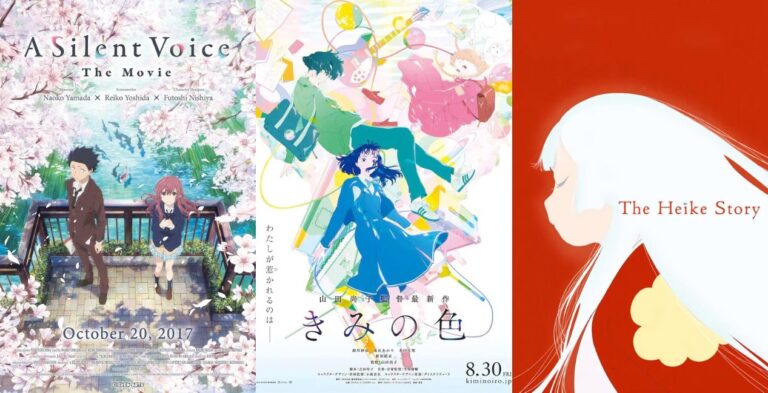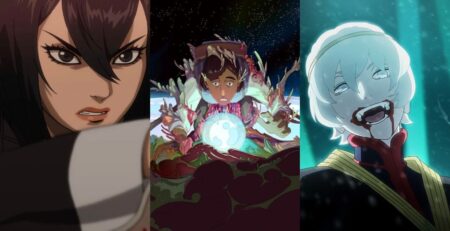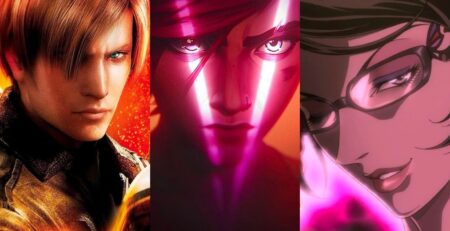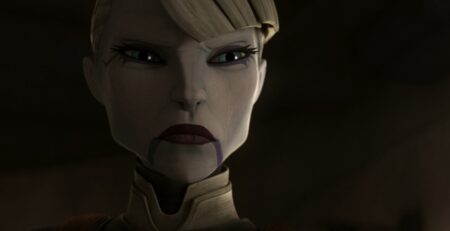Few artists imbue their work with visual empathy the same way director Naoko Yamada does. A master of thoughtful direction and stunning animation that leaps from the screen and into the deep recesses of our hearts, Yamada has carved an undeniable place for herself as a forefront filmmaker in animation. Throughout her career, she’s established a persistent style and tone to her work that’s only become more refined over time. From utilizing flower language to say what can’t be said about her characters and their ongoing struggles to the emphasis on low angles that prioritize body movement and physicality, her style aids the thematic core.
The visuals of her work — often bolstered by the extraordinary composer Kensuke Ushio — are intoxicating despite their overt grace. There’s a gentleness to her process, even in her more violent stories. But it’s her ability to capture such vigorous empathy that makes Yamada shine beyond her contemporaries. It’s not just that she has a singular style but that her stories all ache with compassion. This is evident again in her latest, the stunning The Colors Within, which takes a subtle approach to a coming-of-age story. So many of the characters’ plights and inner pains are alluded to rather than openly addressed, and yet their journeys are no less moving because of it.
Instead, through the characters’ actions and the way they fidget, speak to one another, and collaborate, Naoko Yamada finds an intense camaraderie between the three protagonists. The world will throw problems at them, and they’ll have to persevere with friendship, a mutual interest, or both.
To celebrate her latest release, here are the essential Naoko Yamada projects to check out, from roles as key animator, to feature film director.
Clannad and Clannad After Story (2007-2009)
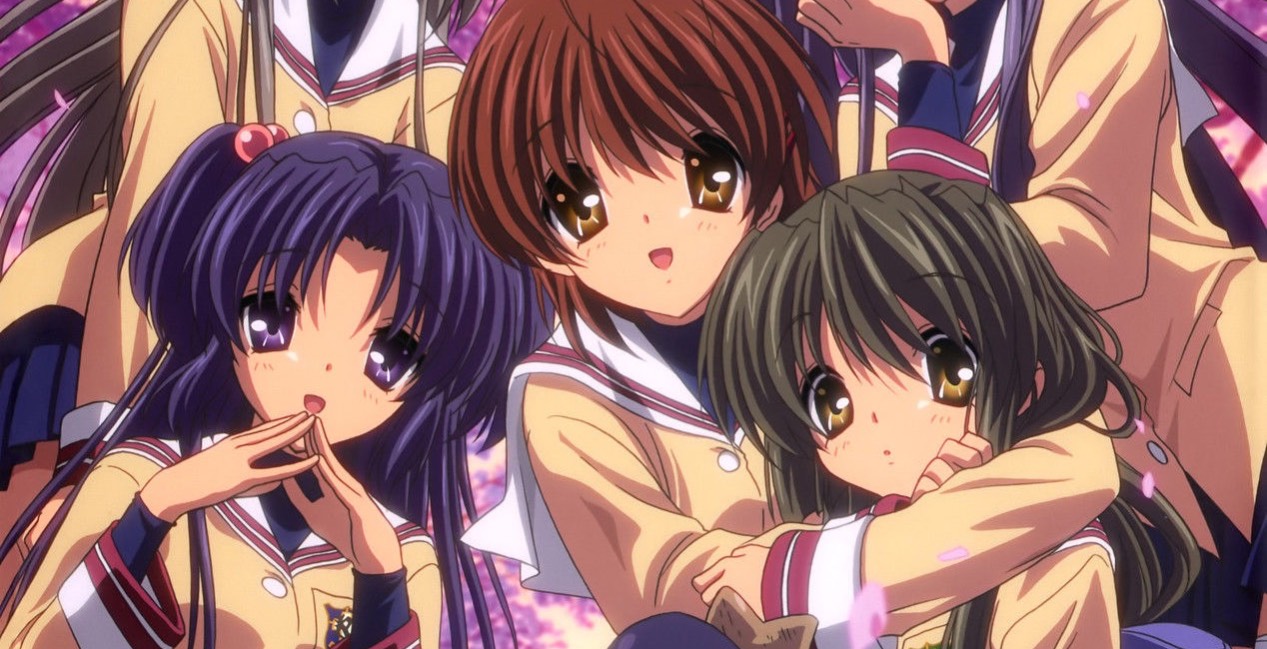
Synopsis: A high school student who cares little about school or his future decides to help a lonely girl repeating her final year by re-establishing the school’s drama club.
On first viewing, Clannad appears almost out of time. This mid-aught, coming-of-age story beautifully toes the line of melodrama—arguably leaning fully into it. To new fans of the medium, Clannad appears like a relic. However, anyone more familiar with this clamp-style aesthetic will see its charms. However, the cutesy style and character designs are misleading.
There’s an introspective, harrowing even story at its center that makes the series, especially its follow-up, Clannad After Stories, sneaky emotional wallops. In one of the early days series from Kyoto Animation (Violet Evergarden, Tsurune), Naoko Yamada acts as the key animator and director of five episodes across both seasons.
The understated and melancholy atmosphere melds with the tumultuous stories these characters face. Shojo with a side of devastation, Clannad isn’t always the easiest watch, but it becomes crucial and formidable for fans of Kyoto Animation and Yamada.
K-On! And K-On!! (2009–2010)
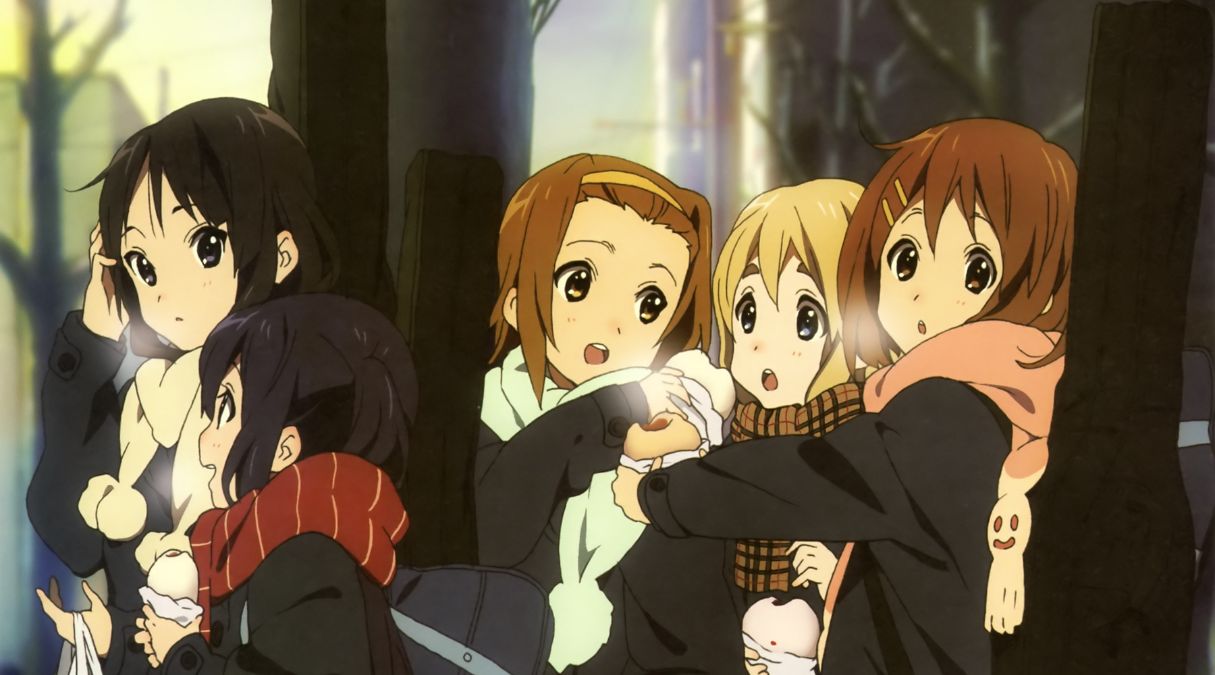
Synopsis: Five high school girls become friends through the Light Music Club.
A serendipitous hang-out comedy that subtly allows room for growth and coming-of-age ennui, K-On! and its successor, K-On!! sneaks up on you. Yamada serves as a key animator and director throughout the series, and while it’s another series based on an existing manga, it’s demonstrative of her particular interests in storytelling. The series is light on its feet and bubbling with infectious energy.
The series carries the themes of music as a connective tool, girlhood, and the passage of time with ease. That last point is what truly sets it apart from other notable contemporaries as time becomes a key feature in the lives of these girls, Yui in particular, as she is the one we follow most closely. The scenery changes from episode to episode as the world shifts and seasons change, following the girls from their easy adolescence to graduation as they deal with all that entails.
Easily fluctuating between being silly and moving, the friendship between the band takes top priority and guides us through each new stage in our lives.
Nichijou (2011)
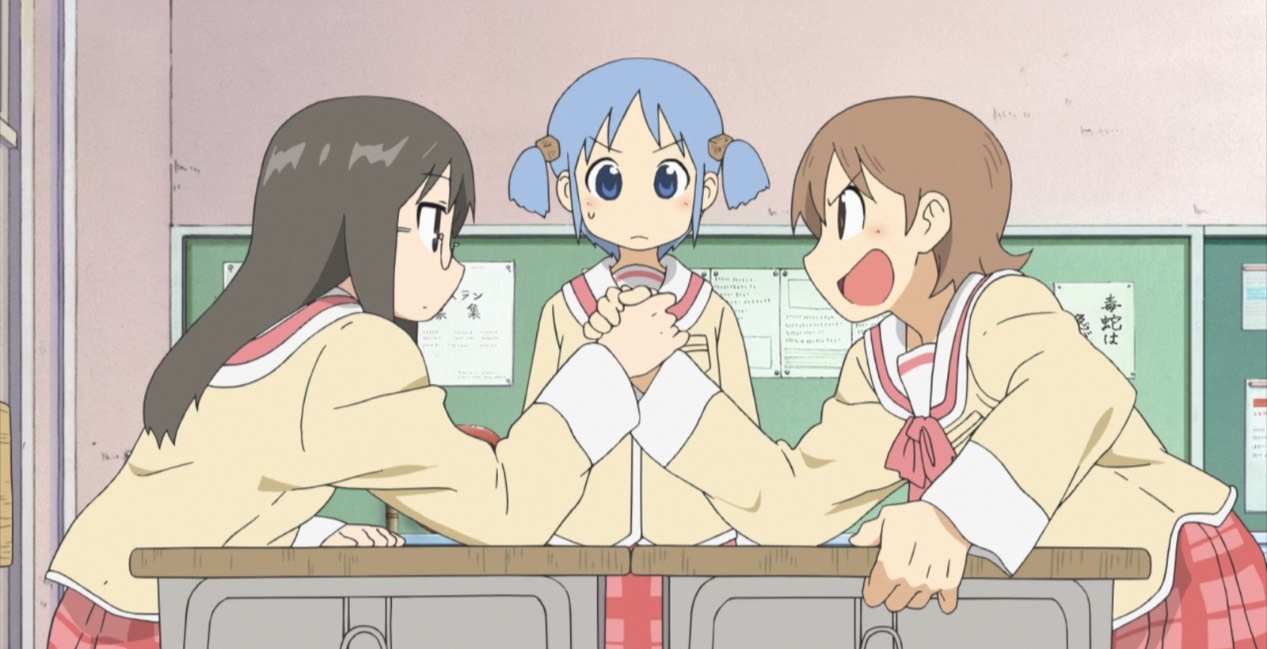
Synopsis: The outlandish everyday lives of the various people in the town of Tokisadame.
Absolute raucous absurdism. Expect the unexpected in Nichijou, in which Yamada served as an animator. Based on the manga written and illustrated by Keiichi Arawi and adapted by Tatsuya Ishihara, the comedy digs deep into surrealism. With its female protagonists, the humor is fast and loose, dispelling logic for the sake of something more offbeat. Yes, students are at the center of this gag anime, but there’s also a young scientist who creates an android who desperately wants to fit in and a talking black cat.
The animation style fits the series’ tone, fluid and flexible yet simplified in its approach. Naoko Yamada only directs two episodes, but the series is a key feature of Kyoto Animation, where she first began. It might not be a personal favorite, but there’s electricity lining the comedy that makes for a punchy, laugh-out-loud experience.
Tamako Market (2013)
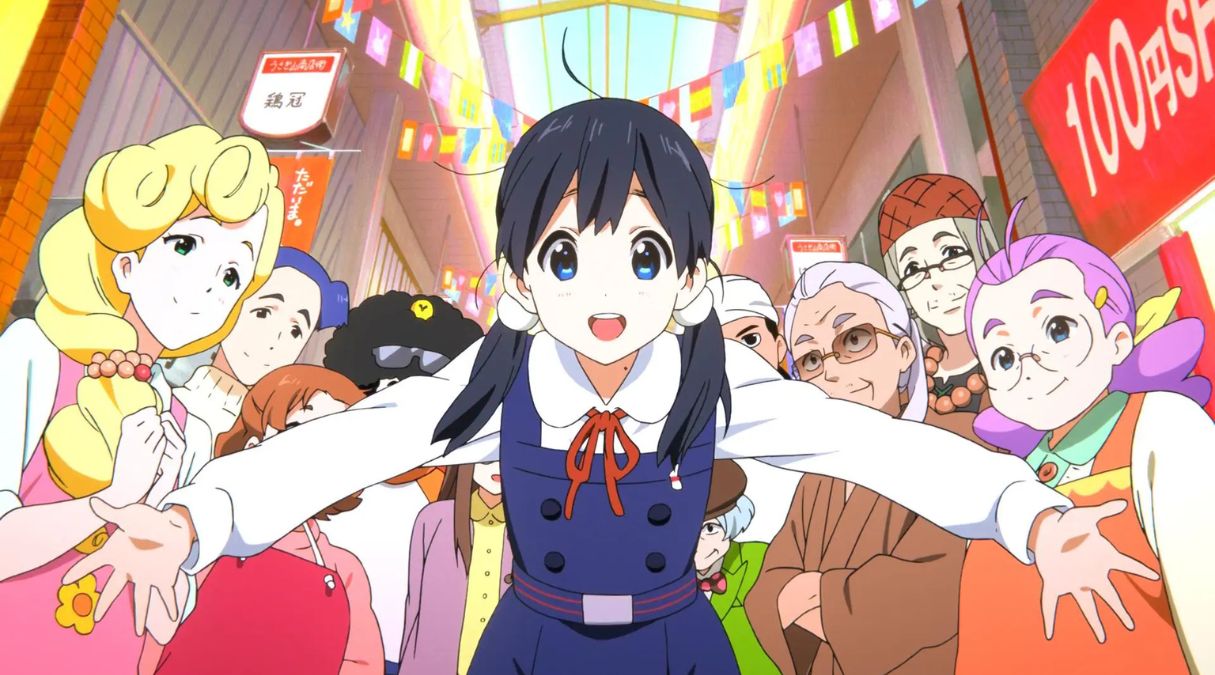
Synopsis: Tamako’s life becomes complicated with friendships, rivalries and the arrival of a peculiar bird.
Directed by Naoko Yamada and written by frequent collaborator Reiko Yoshida, Tamako Market dabbles in many genres. There are rivalries and fantastical leanings, but the series’ heart is the slice-of-life elements that permeate throughout. While it doesn’t carry the same weight as some of Yamada’s other efforts, it’s the perfect follow-up to K-On!, maintaining the fun, infectious energy.
A little odd but maintaining a necessary warmth for its characters and, as always, engaging visuals, it’s yet another pivotal stepping stone in her career. Like so many of her works, it creates a sense of place and time, adding vibrancy to what otherwise might seem ordinary. But through the bustle of the market and the constant movement that provides a sense of life, it’s wonderfully lived in.
A Silent Voice (2017)
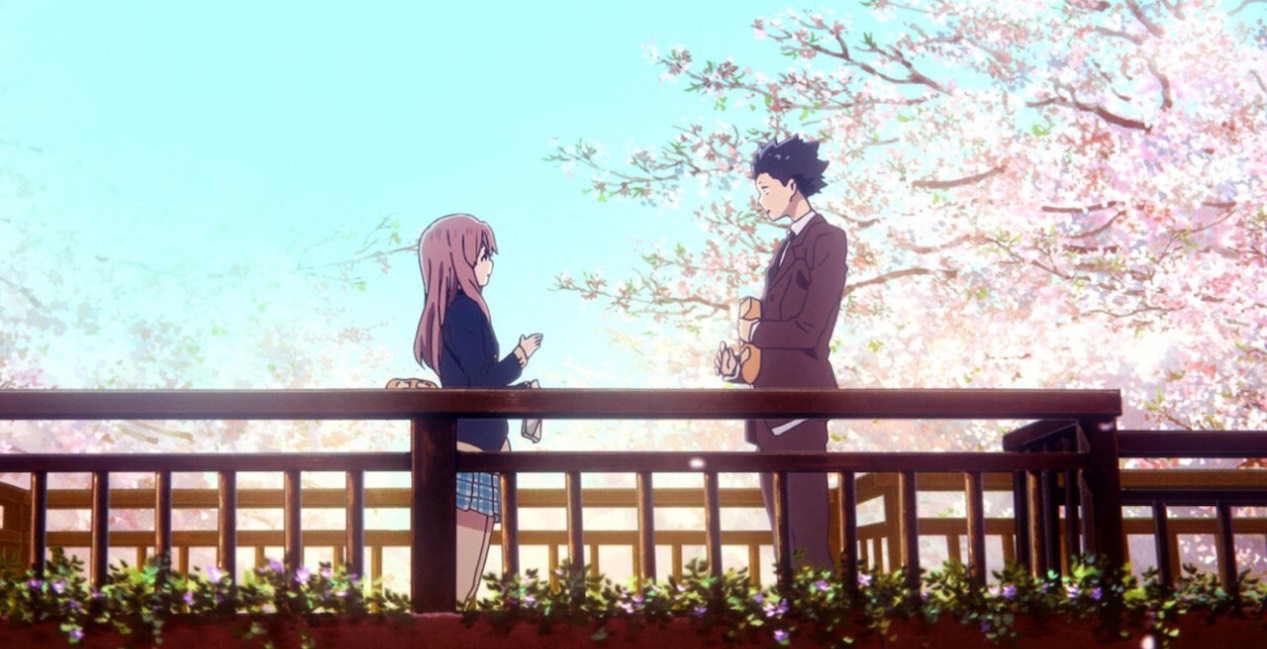
Synopsis: A grade-school student with a hearing impairment is bullied and transfers to another school. Years later, the former bully is tormented by his behaviour and sets out to make amends.
A Silent Voice is a lesson in empathy. Based on the manga of the same name by Yoshitoki Ōima, the film gorgeously adapts her transcendent story that works through a dense, complex subject matter. What happens when a former bully looks to repent? When his self-loathing leads him to self-destruct and find salvation in the person who was once the target of his misdirected ire? It’s a complicated, layered story that allows characters to transform and grow, to learn from their mistakes in one of the finest, touching displays of onscreen healing and catharsis.
The film is stunning and has perhaps the best Kensuke Ushio score to date. It displays all of Yamada’s typical touchstones, such as light line work and physicality as a focal point. The character animation and acting alone are dynamic and visceral, from an early fight between the two leads that turns physical to the anxious movements of early connections.
Despite the contemplative nature of the film, it’s explosive in how expressive everyone is. A Silent Voice deals with traumatic subject matter with profound compassion. It’s a transformative experience to see just how far these characters can go, the bonds they can create through the efforts of others’ kindness, and the self-determination and willpower to strive to be a better you than the day before.
Possessing elements of coming-of-age whimsy, the film uses this as a smokescreen to deliver its utmost message: we are as strong as the friendships we make, with immense potential to reach beyond our darkest days—simply gorgeous filmmaking.
Liz and the Blue Bird (2018)

Synopsis: Best friends in their last year of high school realize there is no such thing as being together forever.
Written by Reiko Yoshida and based on the Sound! Euphonium, a novel series written by Ayano Takeda, and its anime television series adaptation, Liz and the Blue Bird acts as a spinoff of the anime. Dealing with the ongoing plights of an intense friendship falling apart at the seams, Liz and the Blue Bird is a film about yearning. Yearning for a friendship to reclaim the ease youth provides, yearning for future paths to collide rather than splinter. Split into the main narrative and the song’s story that the two girls perform together in a duet, the film deals with hints of magic and fantasy as their own story is grounded in reality.
Narratively understated, the art direction by Naoko Yamada reaches for more sweeping romanticism to say all that the characters can’t — or won’t. The contrast between the school and the wide open air is striking in the overwhelming pink skies and lush greenery. The film doesn’t force happy endings or easy conclusions but instead takes an observational approach, a key feature of Yamada’s style as a director. Yes, it’s sad that these two girls aren’t as close as they once were. But there’s tenderness and warmth regardless, the proof of someone’s impact even if their influence is fleeting.
The Heike Story (2021)

Synopsis: An orphan named Biwa is taken in by the powerful Taira Clan after their leader witnesses her psychic abilities; what she predicts is a future of bloodshed, violence and civil war.
The Heike Story and its significance for Naoka Yamada and her career is twofold. First, it’s her first project with Science SARU (Dandadan, Scott Pilgrim Takes Off) instead of Kyoto Animation, where she first cut her teeth. Secondly, it’s her most singular piece of storytelling. While key features of her style remain intact, The Heike Story is unlike anything else she’s done. Adapted from Hideo Furukawa’s 2016 translation into modern Japanese of The Tale of the Heike, a 13th-century historical epic depicting the rise and fall of the Taira clan, the 12-episode series illuminates everything that makes Yamada such a masterful, visual storyteller.
The striking tone and artistic fluidity of the series are immediate. The animation fluctuates with constant movement. There’s immense delicacy in the art style that rebuffs realism for the sake of artistic integrity. Mixing illustrations with traditional Japanese watercolor and woodblock prints, the effect is luminous. The composition and style have a deep felt elegance where the rougher edges allow for greater motion. Because of this, the world feels lived in. Everything from the biwa the protagonist plays to the swaths of cloth that drape over the characters, all strikingly vibrant, helps ground the universe.
The expansive scope and direction showcase how Naoko Yamada understands how to fill an entire frame. An early episode sees three brothers wander under a Torii gate, and the way in which the camera lingers and droops before lifting to take a Bird’s Eye view to pivot onto who the perspective comes from instills trepidation. The sequence stuns due to the use of color and the sweeping direction while also creating a sense of tension and unease. So much of The Heike Story maintains this level of trepidation — fitting for a character haunted by premonition.
Each frame of the anime is a work of art. The story is engaging and reliant on our ability to focus as it refuses to let us drift off, dealing with the violence of this era and what women suffer due to it is a heavy watch. But it’s buoyed by the tremendous clarity of its art and the craftsmanship that goes into it. Yamada’s direction is crisp and intentional, offering a cinematic scope and immersing us.
Naoko Yamada whisks us away into familiar and strange worlds, anchoring us in the relatability of her characters and how they approach an ever-shifting lives. With truly engrossing visuals that understand the scale and scope at her disposal, the very best of her films and series either leave us changed or invigorated. Emotional subtlety paired with detailed and graceful artistry culminate in cinematic magic. She gets to the core truth of our emotions — the compassion and ugliness, the silly and melancholy — and through that, delivers evocative, sincere stories that innately understand the human condition on both the small and large scale.
As one of our best living directors in anime — one of the most interesting current directors, period — Naoko Yamada beautifully captures the yearning and contemplation that comes with coming-of-age stories.
Disagree with us? Did we miss a title? Let us know on Bluesky at @butwhytho.net.

